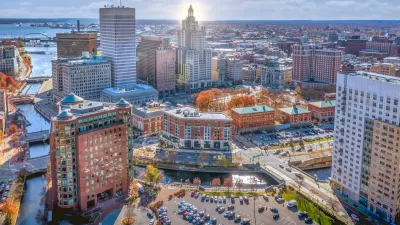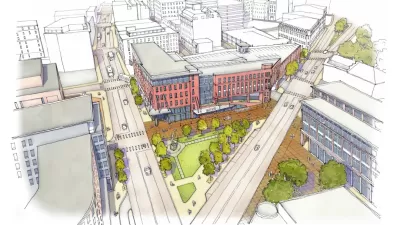As central cities become prized by young professionals and the companies that want to lure them, it behooves states to recognize the value of the historic buildings that bring unique character to workplaces and urban environs, writes Kaid Benfield.
Providence, Rhode Island was lucky to have a weak economy a few decades ago, says Benfield. As other cities replaced their historic buildings with "newer but mediocre buildings," Providence missed out, leaving its downtown historic legacy intact.
"Providence may be a particularly fine example, but it is hardly the only city with underutilized historic assets that could become a cornerstone of future economic development," he explains. "Information has largely replaced manufacturing as America’s economic engine, and young, talented workers today are seeking walkable districts with character in which to work and live. (Just ask suburban Dublin, Ohio about that.) From Pasadena to Portland, from Paducah to Providence, saving and sprucing up these assets is the way to go."
However, states such as Rhode Island and Missouri, have dismantled, or are considering dismantling, preservation incentives that are crucial to renovating and reusing historic properties.
"Providence is sometimes thought of as a declining city, but to me it seemed more like a promising one – poised for rebirth, fueled by the country’s emerging economy and demographics," he adds. "Its chances – like those of other, similarly situated communities – will be enhanced if it (1) recognizes the impressive assets that it has; (2) builds upon those assets by courting the right kinds of businesses and residents that appreciate character and walkability; and (3) preserves those assets for the future, starting with re-enacting the state’s historic property tax credit."
FULL STORY: The case for building on a city's historic assets

Planetizen Federal Action Tracker
A weekly monitor of how Trump’s orders and actions are impacting planners and planning in America.

Map: Where Senate Republicans Want to Sell Your Public Lands
For public land advocates, the Senate Republicans’ proposal to sell millions of acres of public land in the West is “the biggest fight of their careers.”

Restaurant Patios Were a Pandemic Win — Why Were They so Hard to Keep?
Social distancing requirements and changes in travel patterns prompted cities to pilot new uses for street and sidewalk space. Then it got complicated.

Platform Pilsner: Vancouver Transit Agency Releases... a Beer?
TransLink will receive a portion of every sale of the four-pack.

Toronto Weighs Cheaper Transit, Parking Hikes for Major Events
Special event rates would take effect during large festivals, sports games and concerts to ‘discourage driving, manage congestion and free up space for transit.”

Berlin to Consider Car-Free Zone Larger Than Manhattan
The area bound by the 22-mile Ringbahn would still allow 12 uses of a private automobile per year per person, and several other exemptions.
Urban Design for Planners 1: Software Tools
This six-course series explores essential urban design concepts using open source software and equips planners with the tools they need to participate fully in the urban design process.
Planning for Universal Design
Learn the tools for implementing Universal Design in planning regulations.
Heyer Gruel & Associates PA
JM Goldson LLC
Custer County Colorado
City of Camden Redevelopment Agency
City of Astoria
Transportation Research & Education Center (TREC) at Portland State University
Camden Redevelopment Agency
City of Claremont
Municipality of Princeton (NJ)





























